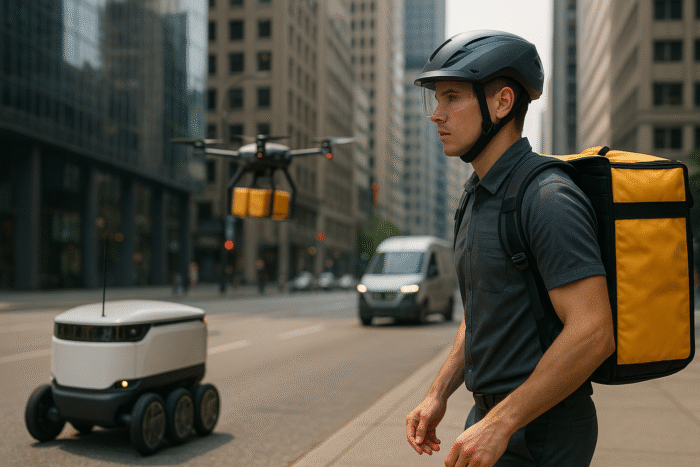If you think same-day delivery is fast, wait until the supply chain collapses time and space altogether. It sounds insane now — but the idea of teleportation as a delivery method is already being discussed seriously in deep physics and quantum computing circles. Not as magic. As an engineering problem.
Teleportation today exists — but only at the quantum level. Scientists have already successfully “teleported” quantum states of particles over distances using quantum entanglement. That’s not moving matter. It’s transferring information, perfectly replicated, from one place to another.
In the lab, it’s fragile, requires near-zero temperatures, and works over short distances. But the concept is proven. This tech-infused logistics landscape is sparking demand for hyper-personalized services – even interactive experiences like login via CrazyTime.games.
So what happens when this scales?
By 2050–2100, theoretical models suggest that teleportation might become feasible for ultra-light, non-biological matter. That could mean information-rich payloads, like pharmaceuticals, micro-components, or even certain types of food.
The idea isn’t to beam your Amazon order across town like in Star Trek. It’s to break an object down into its atomic structure, digitize it, and reassemble it somewhere else using exact instructions — essentially, “printing” the object remotely with atom-level fidelity.
To get there, we’d need breakthroughs in:
- Quantum entanglement stability (across long distances)
- Atomic-scale 3D printing (assemblers that rebuild matter perfectly)
- Massive energy compression and regulation (even small transfers require huge energy loads)
- Ultra-secure quantum communication to transmit exact atomic blueprints with no data loss
In logistics terms, this would kill warehouses. Inventory would be digital. You’d store atomic data, not boxes. Delivery wouldn’t involve movement — it would be a transfer of structure and composition, handled by quantum networks. “Shipping” would take seconds, with no traffic, fuel, or emissions.
It’s not happening tomorrow. But it’s not completely theoretical anymore either. As AI gets better at controlling precision hardware, as quantum computers stabilize and scale, and as atomic-level manufacturing becomes viable, teleportation isn’t just science fiction.
It becomes a high-stakes engineering race — and whoever figures it out first redefines the meaning of delivery forever.
But First: Serious Technical Barriers
Teleportation sounds sleek, but right now, it’s like talking about internet in 1902. There are huge roadblocks. First: entanglement is still unstable over large distances.
Second: scanning and encoding an entire object at atomic resolution would require unimaginable processing power and data bandwidth — think yottabytes per object. Third: the “printer” on the other side must be able to reassemble the object atom-by-atom, with zero tolerance for error.
We’re talking about:
- Quantum-safe transmission protocols
- Energy grids orders of magnitude stronger than today’s
- Global standards for atomic data formatting (think HTTP, but for matter)
- Failproof reassembly with error correction built at the atomic level
Most of this doesn’t exist yet — but the foundations are being built now in quantum labs, AI-powered microscopy, and nanoscale manufacturing research.
Teleportation Will Rely on Local Infrastructure
Here’s the twist: even if teleportation eliminates delivery vehicles, it’ll still rely on physical endpoints. A teleporter isn’t a magic beam — it’s a device, and it will need power, security protocols, material stores, and user authentication. Think of it like a local printer, but for real-world objects.
Cities will probably host teleportation hubs at the beginning. Industrial zones, hospitals, data centers, and maybe luxury residential buildings will be first to adopt. These endpoints will require:
- Shielded, high-energy environments
- Integrated quantum networking
- Real-time AI validation for blueprint-to-object consistency
This isn’t replacing logistics infrastructure — it’s rebuilding it from the ground up.
What Happens to Human Couriers?
At first, nothing changes for people delivering goods. But over decades, the shift would be dramatic. Traditional couriers, warehouse workers, customs brokers — all those roles would fade or transform.
But here’s the catch: teleportation will create new jobs too. We’ll need:
- Quantum network engineers
- Nano-assembler technicians
- Atomic data security specialists
- Protocol designers for matter transmission standards
Just like the internet didn’t eliminate work but reshaped it, teleportation would rebuild the workforce around a new kind of value: precision, not transportation.
Final Thought: The Big Shift Isn’t Speed — It’s Ownership
In a world where anything physical can be instantly recreated anywhere, the very idea of “owning” something may change. Objects might be licensed, like software. Need a wrench? You don’t buy it — you request a teleport session.
Food, tools, even clothes could exist as temporary permissions to print and use, with access managed digitally. Supply chain becomes code. Matter becomes a service.
Teleportation delivery wouldn’t just make logistics faster. It would fundamentally rewrite how we think about material life.



